News
Style Guide for Authors
more
Financial Statement of 2019
more
Available Now! Down Fell the Statue of Goliath - Hungarian Poets and Writers on the Revolution of 1956
more
Subscription
Hungarian Review annual subscriptions for six issues, including postage (choose one):

11 March 2016
The School of András Kovács and the Transylvanian Renaissance
On the Occasion of his Receiving the Jenő Szervátiusz Award, Budapest, 12 November 2015
The Jenő Szervátiusz Award was originally created to honour artists (painters, sculptors and graphic artists), but since 2005, it has also been awarded each year alternately to art historians and journalists, in order to direct the public’s attention to outstanding results in presenting and appraising Hungarian art in the Carpathian basin. The recipient of this year’s award, an art historian, András Kovács, is professor emeritus at Babeş-Bolyai University in Kolozsvár (Cluj-Napoca) and external member of the Hungarian Academy of Sciences. We are dealing with an academic who established a new school of thought, in two separate ways. Firstly, his monumental academic oeuvre, which concentrates on late Renaissance monuments in Transylvania and their historical context, set a new course for art historical research in Transylvania. And secondly, since 1990, when he joined the university as professor of art history, he has raised a whole generation of excellent specialists, resulting in the unprecedented rebirth and flourishing of art historical research in Transylvania.
When we say rebirth, we mean it literally. The continuity of art historical research in Transylvania was almost completely broken in the 1980s, due to the extreme worsening of political conditions in Romania, inconceivable for today’s generations. Art history education and the training of art historians were gradually discontinued at every Romanian university, thus making the training of new generations impossible for quite some time. After 1990, art history education restarted at Babeş-Bolyai University in Romania, and in 1996 it was precisely professor András Kovács who organised it in Hungarian as well, paving the way for the foundation of a common department of art history in 1999.
Our awardee received his PhD in 1984, his dissertation focusing on constructions commissioned by Gábor Bethlen Prince of Transylvania (1613–1629) as well as on his activities as patron of the arts. Just so we can picture the absurdity of the difficulties a researcher had to overcome at the time, suffice it to say that it took nearly a year to produce five copies of the only typewritten master copy of the final manuscript already approved by the consultant, the necessary number for the official submission. And that only by circumventing the effective rules that thwarted all forms of self-initiative. Naturally, there could be no question of publishing this dissertation then, even though it put the architecture of Gábor Bethlen’s age in a fundamentally new perspective.
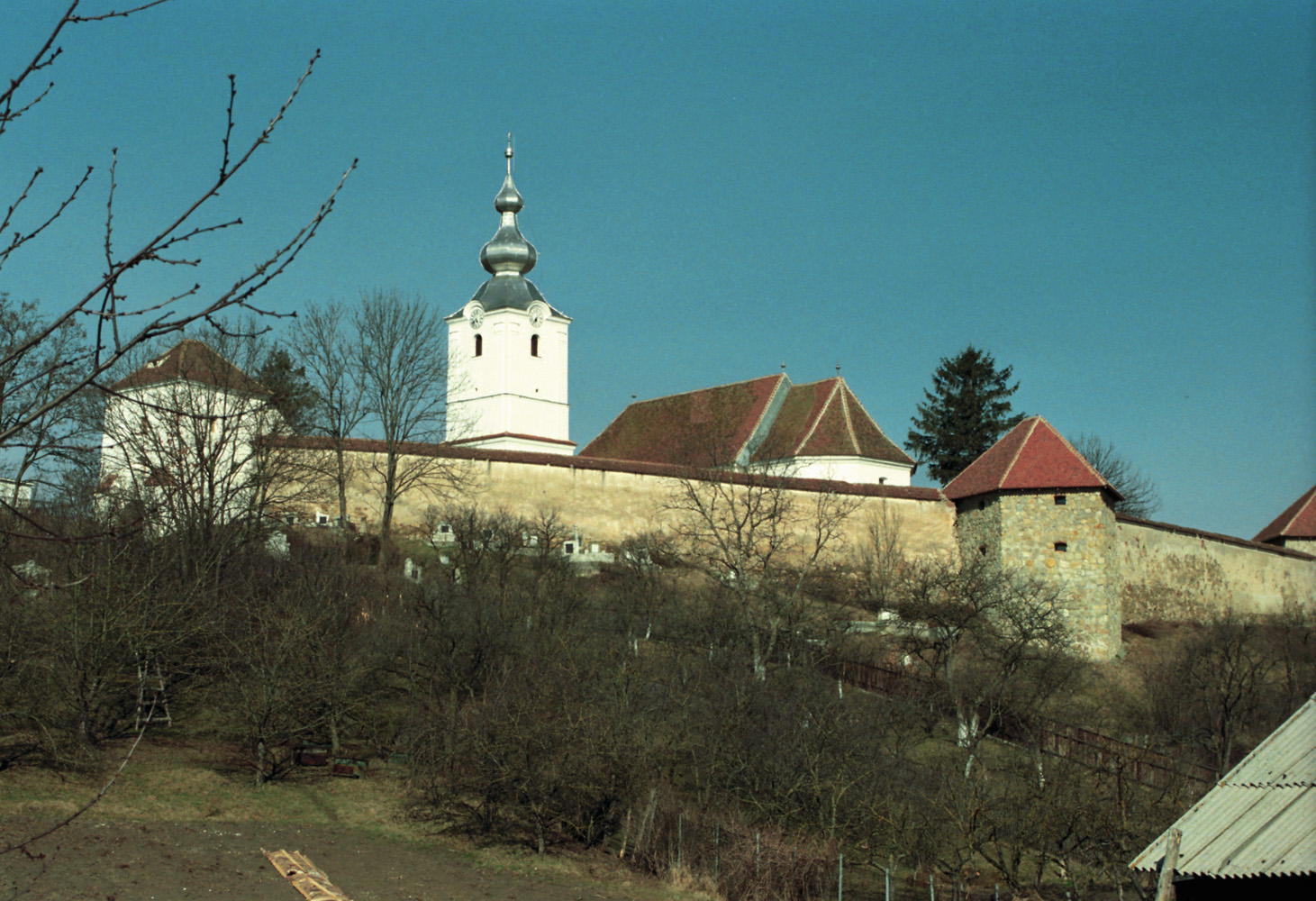
Illyefalva (Ilieni), fortified church. All photos to this article are by József Sebestyén
But a serious interest in science defies adverse circumstances; and the elaborate technique to do so had been worked out by such eminent academics as Zsigmond Jakó (1916–2008), a professor of history and one of the mentors of András Kovács, or the outstanding figure of Hungarian linguistics, Attila T. Szabó (1906–1987), who also worked at Kolozsvár. It was not by chance that in this intellectual climate Kovács showed the defining characteristics of his future academic work already as a university student, while researching the city archives. It is interesting to quote his own words in this regard: “I began systematically reading the volumes of old account books of the city of Kolozsvár dating from the first half of the 17th century in autumn [1966]. I transcribed the Latin inventories of estates kept in the capitular archives of title-deeds in Gyulafehérvár (Alba Iulia), studied the local architectural surveys dating from the 19th century [the work in the Gyulafehérvár archives in the summer of the same year was begun precisely under professor Zsigmond Jakó’s inspiration], and finally put together the complete picture from the laconic entries of the account books of the city. These proved to be decisive moments for me. The exciting thrill of discovery, of newly acquired knowledge is the most wonderful narcotic. Thus reading and copying the entries of the account books, and later the regal letters addressed to the Kolozsvár and Beszterce (Bistriţa) councils, day in, day out, as well as interpreting the information therein, became a determining source of joy for me for many years to come.”1
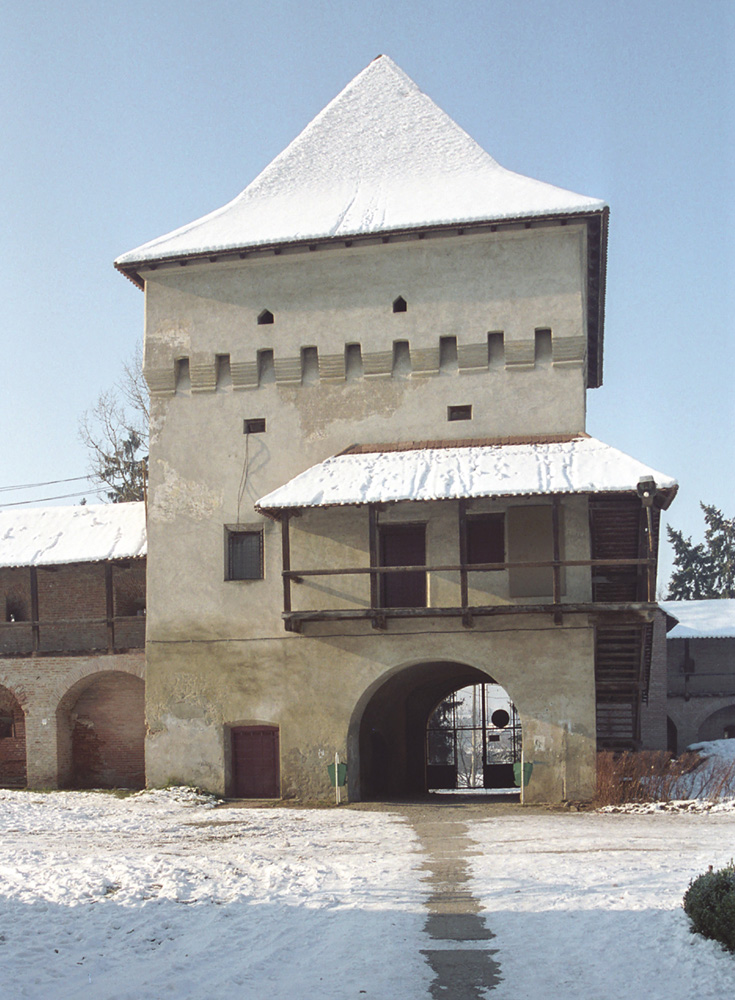
Marosvásárhely (Târgu Mureș), barbican
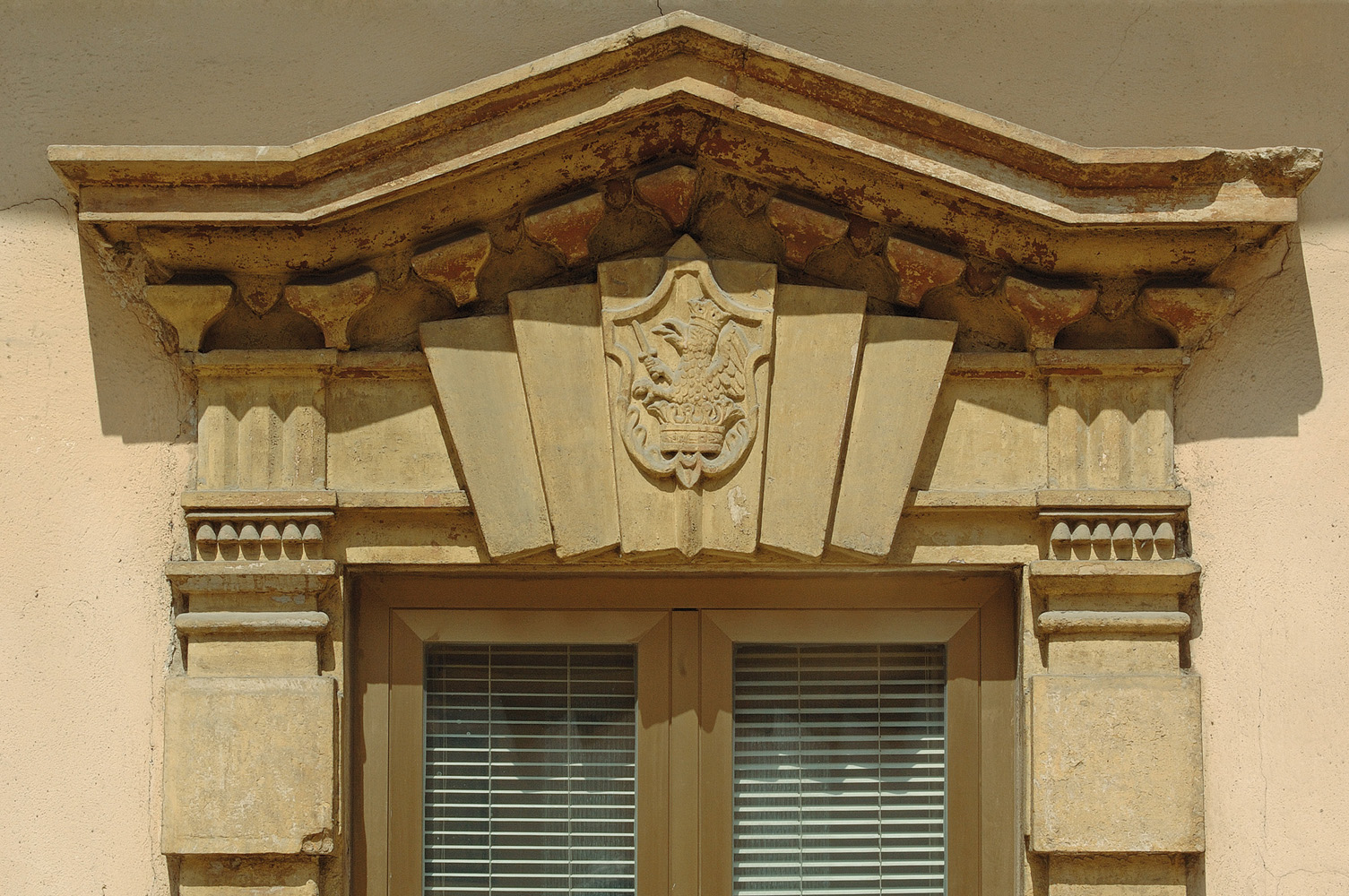
Kolozsvár (Cluj), door-case with the coat of arms and initials of István Kakas, around 1590–1592
The lines above, evoked in later reminiscences, reflect the intellectual experiences and professional confessions of a university student seriously preparing himself for academic work. At the time of his first adventures into the world of scholarly research, this young man had been the student of Virgil Vătăşianu (1902–1993), a professor of art history at Babeş-Bolyai University.
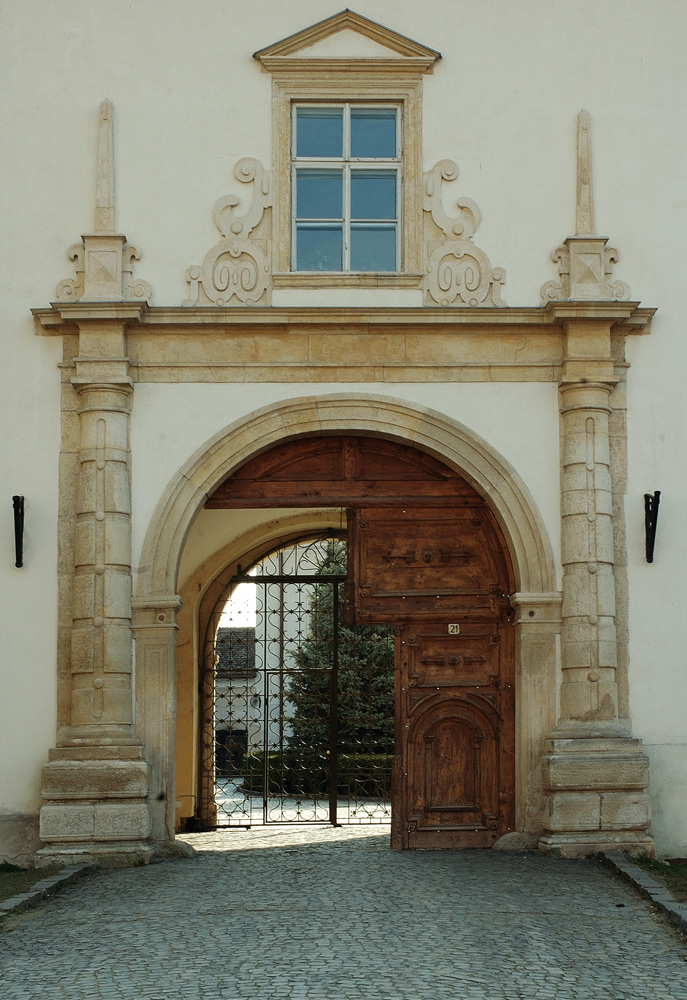
Gyulafehérvár (Alba Julia), the gate of archiepiscopal palace
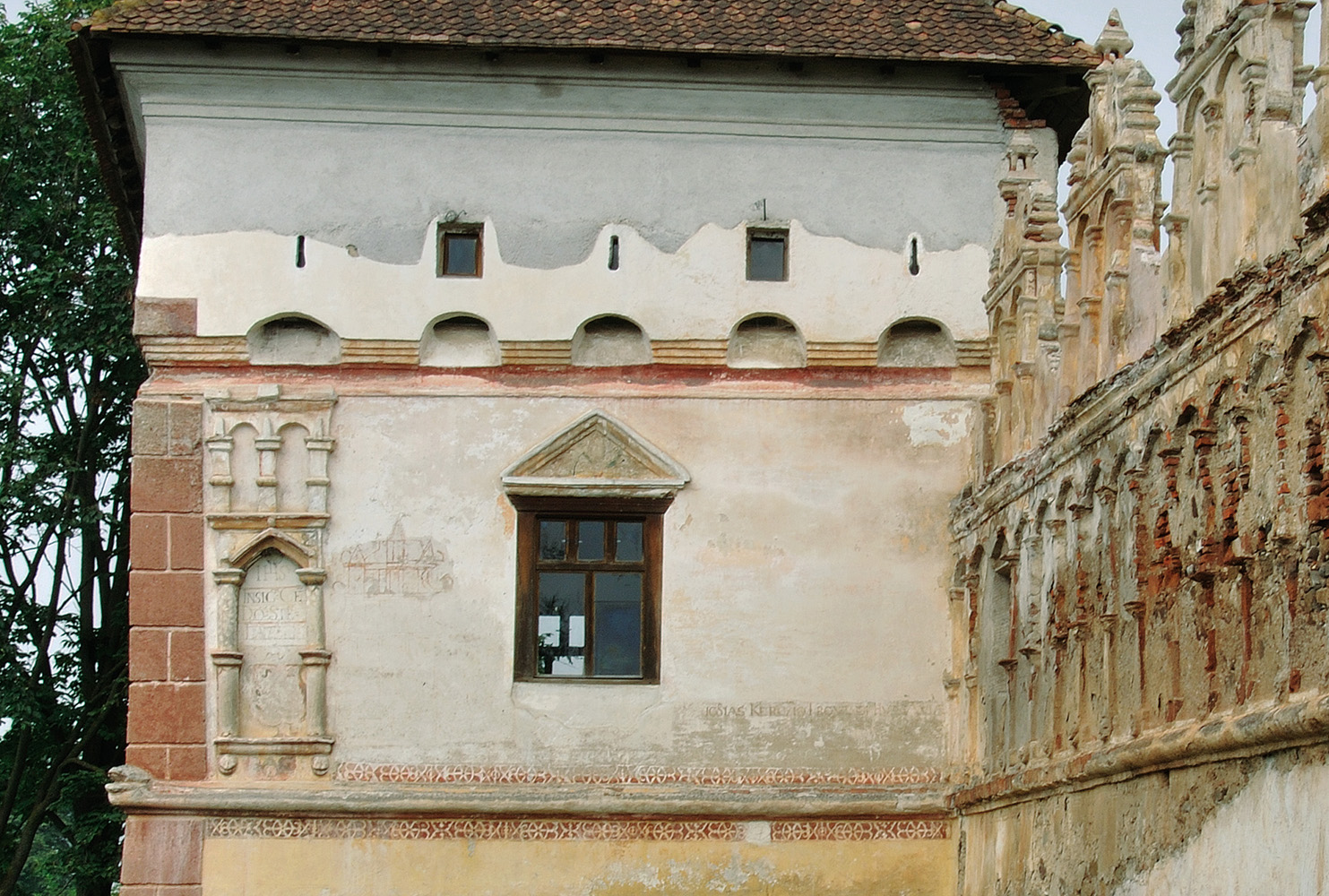
Szárhegy (Lăzarea), detail of the south-western corner tower of the Lázár Castle
Evoking the memory of his professor, András Kovács says, “Our professor hammered the method of thorough description and methodical analysis of monuments into our heads. He deeply condemned and despised what he called ‘the Bucharest mode’, an aestheticising, superfluous style full of ornaments and foreign words that conveyed nothing.”2 This summary portrait depicts a scholar of broad horizons, a rare phenomenon those days, not only in Transylvania, but in Romania too. Vătăşianu, who came from a well-to-do Romanian middle-class family in Nagyszeben (Sibiu), received his doctorate degree in the contemporary capital of European art history, Vienna, his dissertation focusing on medieval Romanesque monuments of the Hátszeg region. But he also studied in Prague before spending about a decade in Italy, and he made good use of his experiences later as a researcher and teacher. His monumental survey of the medieval art history of Transylvania in Romanian, published in 1959, was a pioneering work that analysed the results of Hungarian and German research done in that field in a fair way.3
The teaching professor Vătăşianu provided for its students – some of whose mother tongue was Hungarian – was delivered on a high professional level. But in order to understand the epoch-making work of András Kovács, we have to refer briefly to its antecedents in Transylvanian scholarship as well.
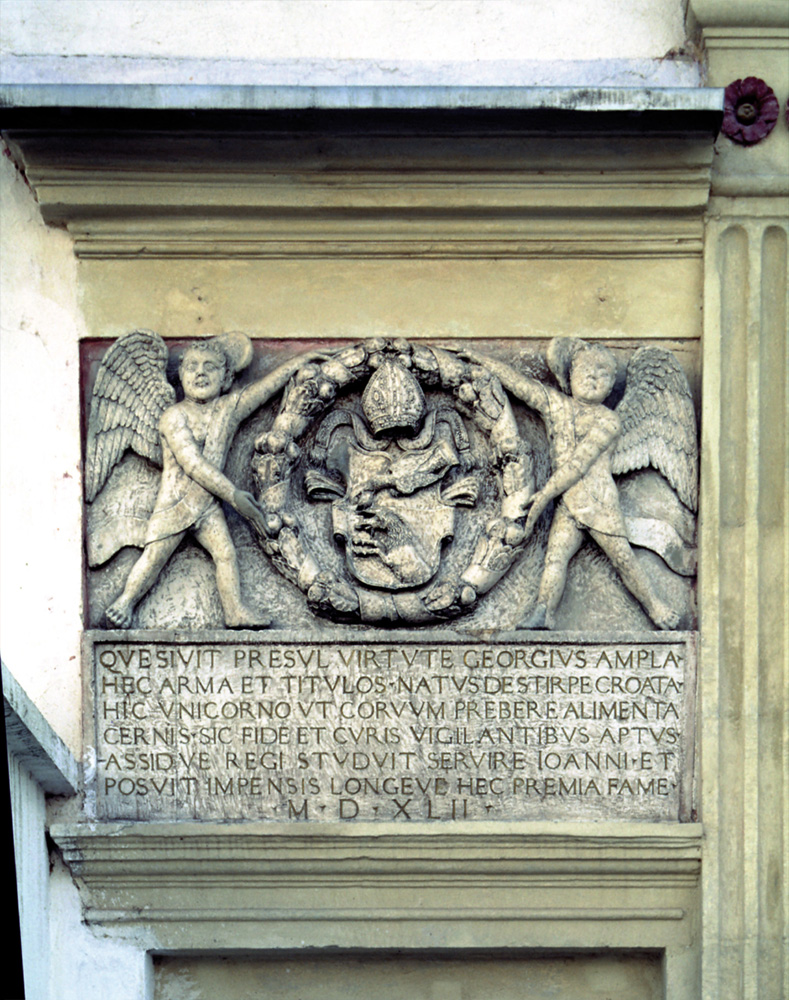
Szamosújvár (Gherla), the coat of arms of György Martinuzzi above the outer gate
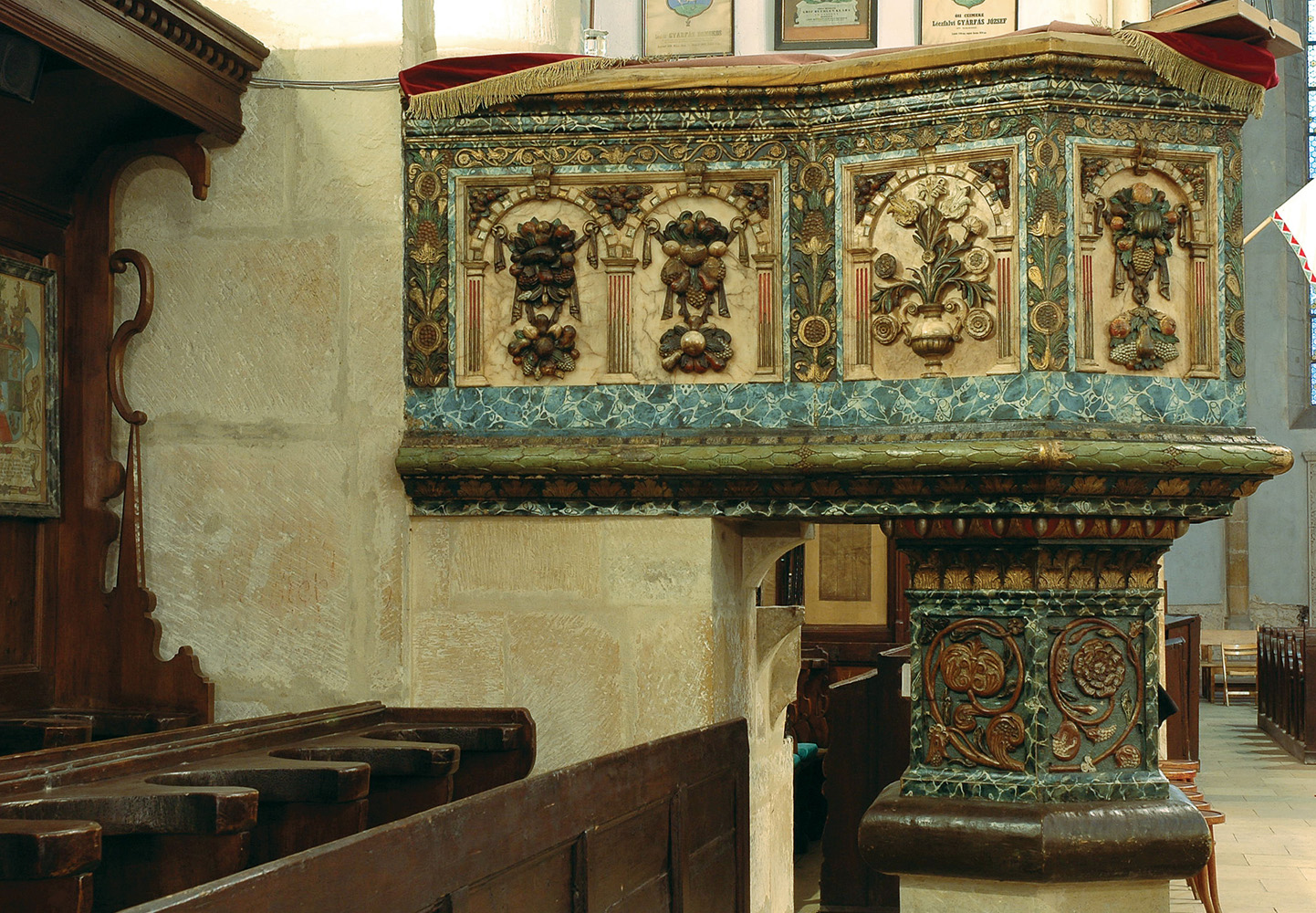
Kolozsvár (Cluj), the pulpit of the reformed church in Farkas Street, 1646
The systematic exploration and evaluation of archival sources, which is a given in historical science, was not so self-evident in art history for a long time. Our feted awardee revealed his own professional credo in this regard in his appraisal of the work of Margit B. Nagy (1928–2007), another eminent art historian. Describing her scholarly merits he points out that Margit B. Nagy recognised the opportunity “which was then quite unprecedented in our art history literature, that it is through the direct analysis of a work of art and the systematic and comparative study of the archival sources relating to its creation, commissioners and masters, that we can obtain objective, useable results.”4
This method in Transylvanian scholarship has a double root: one is Hungarian, the other Transylvanian.
The Hungarian line in the science of art history goes back to the initiative of Antal Hekler (1882–1940), a man of great erudition, who had been a professor of art history at Pázmány Péter University in Budapest from 1918 on. Hekler launched an academic programme in the post-Trianon environment aimed at presenting and appraising the millennial past of Hungarian art, based on a systematic study and critical analysis of historical sources. He also trained a number of excellent students who were professionally well-equipped to carry out this ambitious project. Among many others, the work of Géza Entz (1913–1993) – who in the 1940s lived in Kolozsvár and was an art history professor at Bolyai University from 1945 – stemmed from the same spirit and environment.
The discipline of history also gave a similarly progressive answer to the Trianon trauma, and created the conditions for an intellectual dialogue with representatives of other countries’ academia. It focused on the science-based research of local history, initiated by Elemér Mályusz (1898–1989), a professor of history in Budapest. He called this new branch ethnic history research – as opposed to the Nazi concept of the politically tendentious Volkstum (ethnicity) –, which based its study of a territorial unit, a county for instance, on the exhaustive exploration of archival sources, encompassing all the settlements and tracing the historical changes of their inhabitants. One of the most outstanding students of Elemér Mályusz was the aforementioned Zsigmond Jakó.
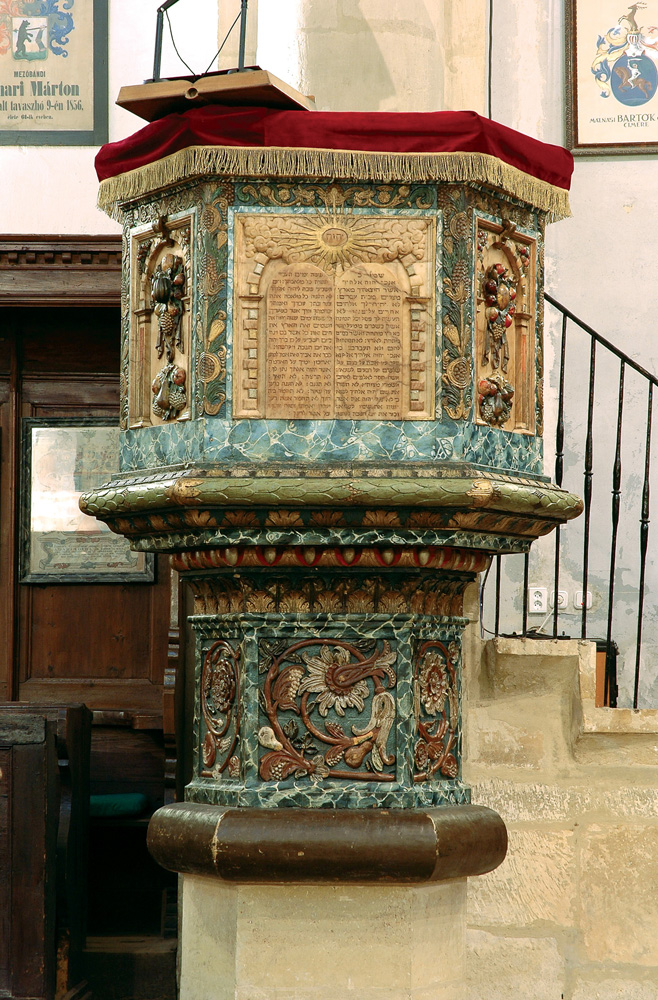 Kolozsvár (Cluj), the pulpit of the reformed church in Farkas Street, 1646
Kolozsvár (Cluj), the pulpit of the reformed church in Farkas Street, 1646
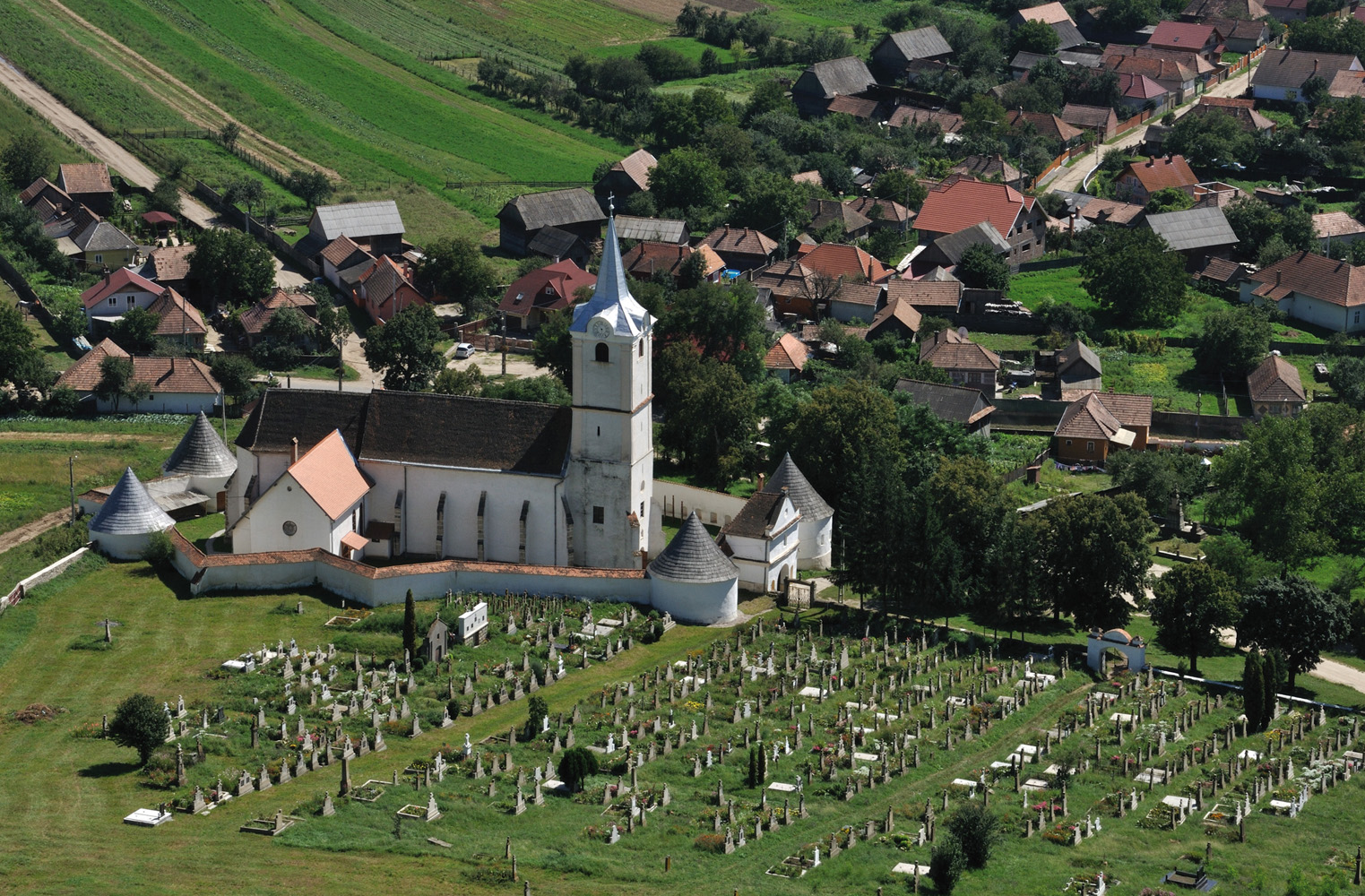
Kézdiszentlélek (Sânzieni), fortified church
With regard to the Transylvanian roots of archival research, which in turn had a fruitful effect on art history research, the role of Lajos Kelemen (1877–1963), a historian-archivist and full member of the Hungarian Academy of Sciences, has to be emphasised. Lajos Kelemen was an outstanding expert of the Transylvanian archival heritage, and as such he generously mentored and assisted all worthy researchers of the Transylvanian past for more than fifty years. He lived all his life in Transylvania, and despite his important contribution to art history research, he himself was not a trained art historian.
Members of the first generation of modern Hungarian art historiography in Transylvania, whose results can be considered as the foundation of András Kovács’s work in many respects, were from Hungary. The names of Jolán Balogh (1900–1988), József Bíró (1907–1945) and Géza Entz must be mentioned in this regard. The latter, who was my father, came to Kolozsvár with Zsigmond Jakó after the second treaty of Vienna, and the two of them became determinant figures of the then evolving and bustling academic and university life. This meant – as we can now establish – the birth of the Hungarian school of art history in Transylvania. Its first – and for decades the only – outstanding representative, who worked all through her life in Transylvania, was Margit B. Nagy, a pupil of Géza Entz and the archaeologist Gyula László (1910–1998).

Kézdiszentlélek (Sânzieni), the chapel of Perkő; 1686
In his work András Kovács effectively combined and in many ways further developed the scholarly experience and methodological innovations transmitted by his aforementioned predecessors. If we may say so, he received the torch directly from Margit B. Nagy. As for his choice of subject and methodology, it is also her he stands closest to. In his work, “his starting point was the history of Transylvanian art monuments, their commissioners, the functions of the buildings and their spatial systems, the work of the masters who took part in their design and realisation, as well as contemporary descriptions and extant works, and he assigned the place of these monuments and groups of monuments in the history of Transylvanian and Central European art by characterising them”.5 The summary work he wrote based on these results on late Renaissance architecture in Transylvania,6 which he published in 2003 (and the second edition in 2006), is considered an outstanding achievement of Hungarian art history.
But the fact that we can speak of a Hungarian school of art history in Transylvania today, and not just of a potential, inherent in the initiative referred to above, is undoubtedly thanks to the work of András Kovács. Because he not only explored the context of late Renaissance art in Transylvania in a highly original and comprehensive way, but from the second half of the 1990s, in his capacity as a university professor, he brought up a whole crowd of young art historians who, for the first time in the history of Transylvanian scholarship, were well-prepared to research the Transylvanian patrimony of art with up-to-date tools.
He could hardly have aspired to such a role, because it presupposed, among other things, the unforeseen collapse of an empire which took place all so rapidly and peacefully. Fortunately he accepted this role for the greatest good of science, and not least of our national community, a role which meant a lot of sacrifice, but as time went by, some gratification as well. If the world had taken a different turn, he could have been the second and possibly the last member of this potential school of thought. Instead, in Transylvania today there are more than two dozen excellent and well-prepared art historians (his former pupils) who are actively participating in the professional life of art history – often in unfavourable conditions – by organising regular conferences, publishing volumes of contributions of these conferences and a series of independent studies, working in close cooperation with art historians in Hungary and elsewhere as well as with colleagues of other fields related to art history. Among them are the 23 art historians who wrote the highly meritorious essays of the volume published in honour of his 65th birthday, entitled Liber discipulorum,7 making abundant use of archival sources and treating a wide range of fields of Transylvanian art history.
Finally, let us mention another interesting fact to illustrate the dramatic contrast between professional opportunities before 1990 and after: in twenty years, from 1969 to 1989, András Kovács had the opportunity to publish only 15 publications, whereas during the last twenty-five years he had 160 titles published under his name, all significant contributions to the discipline of art history.
We wish from our hearts that with his teaching tasks and the accompanying paperwork diminished, he may have the time – besides paving the way for his students and younger colleagues – to take the opium of conquering ever new fields of knowledge as much as he pleases, to his own satisfaction and for the common good of us all.
Translation by Orsolya Németh
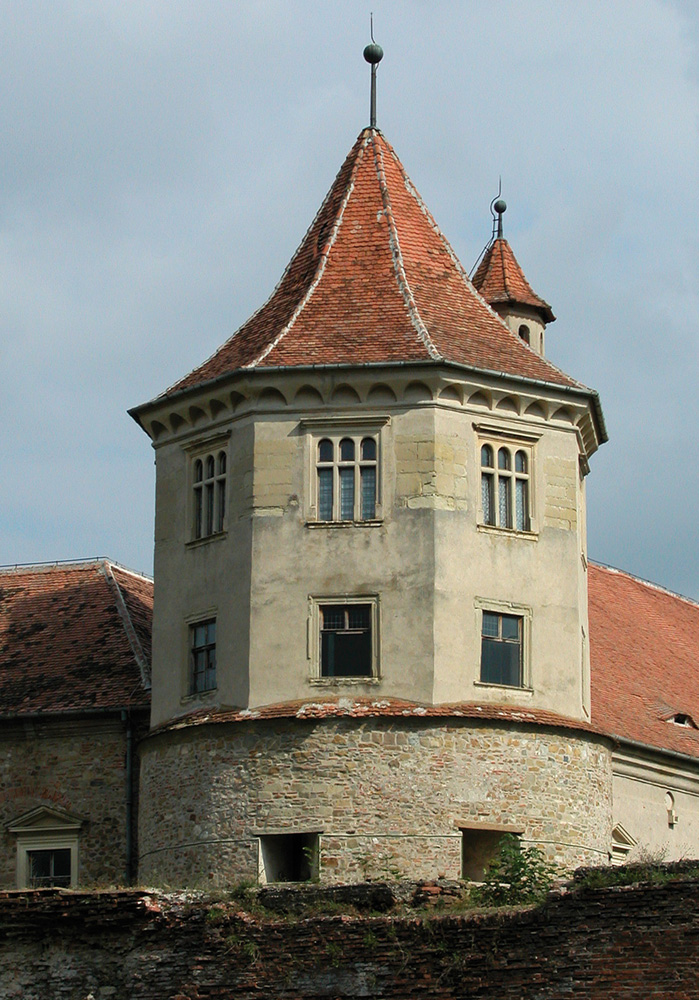
Fogaras (Făgăraș), Red Tower

Kolozsvár (Cluj), the abat-voix of the pulpit of the reformed church in Farkas Street

Betlenszentmiklós (Sânmiclăus), panoramic view of the castle from the Kisküküllő (Târnava) river
1 Kovács, András, “Hogyan lettem művészettörténész?” [How I became an art historian?] In Gyöngy Kovács Kiss (ed.), A történész műhelye [The historian’s workshop], Komp-Press Kiadó, Korunk, Kolozsvár, 2015, p. 106.
2 Ibid.
3 Vătăşianu, Virgil, Istoria artei feudale în Ţările Române, Bucureşti, 1959.
4 Kovács, András, “B. Nagy Margit művészettörténész” [Margit B. Nagy, art historian], Művészettörténeti Értesítő, LVI. (2007) 1–2, p. 362.
5 Galavics, Géza, “Reneszánsz művészettörténeti kutatások Magyarországon 1995 és 2012 között” [Art histoical research of the Renaissance in Hungary between 1995 and 2012], Ars Hungarica XXXIX (2013) 4, p. 492.
6 Kovács, András, Későreneszánsz építészet Erdélyben 1541–1720 [Late Renaissance Architecture in Transylvania, 1541–1720], Budapest–Kolozsvár, Teleki László Alapítvány–Polis Könyvkiadó, 2003.
7 Zsolt Kovács, Emese Sarkadi Nagy, Attila Weisz (eds.), Liber discipulorum. Tanulmányok Kovács András 65. születésnapjára [Essays in honour of András Kovács on his 65th birthday], Erdélyi Múzeum Egyesület, Entz Géza Művelődéstörténeti Alapítvány, Kolozsvár, 2011.







You have to log in or registrate for writing comments.